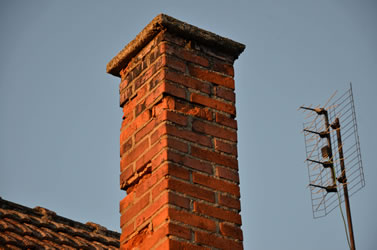Is your ceiling leaking?
Dealing with a leaking ceiling can be stressful for any homeowner. Finding the cause can help you identify and address the problem. Let us take you through five common causes that can lead to water leaking through your ceiling.
Imagine you’re right here with us as we explore these in detail. Providing you with valuable insights and tips to identify potential issues.
1. A Damaged Roof:
A damaged roof is the most common culprit. Imagine standing outside your house, looking up at the top.
Focus on missing or broken tiles, cracked flashing or damaged roof valleys. These gaps allow rainwater to get inside. Finding its way into your home.
Here’s an image that illustrates what a damaged chimney on your roof might look like.

2. Faulty Plumbing:
Let’s move inside your home and examine another potential source of leaks.
Imagine we’re in your bathroom, kitchen, or utility room, inspecting pipes and connections. Look for signs of water stains, dampness, or mould near plumbing fixtures, such as sinks, toilets, or showers.
Leaking pipes or loose connections can cause water to seep into the surrounding areas, leading to a leaking ceiling.
3. Condensation Buildup:
Next, lets head to your loft space if you have one, and discuss condensation buildup.
Picture yourself surrounded by insulation and ventilation systems. Improper ventilation or insufficient insulation can create an environment where condensation accumulates.
Over time, this moisture can saturate your ceiling, resulting in unwanted leaks.
Check for signs of excessive moisture, such as damp insulation or water droplets forming on pipes and surfaces. And whilst you are up there, look at any plumbing. Look out for any pipework connecting to or feeding off water tanks. As well as any tanks that show water escaping. A check I recommend for this is to look all around the bottom of it. Using a tissue to test for dampness.
4. Clogged Gutters:
Let’s venture outside your home again and examine your gutters. Picture yourself looking up at the gutters and downpipes.
Clogged gutters filled with leaves, debris, or bird nests can prevent proper water flow. When the rainwater cannot be channelled away from your roof, it can overflow and seep into your ceiling. Inspect and clean your gutters to prevent this issue. If its low enough, a mobile phone on a selfie stick might reach a ground floor gutter, such as a kitchen extension.
5. Structural Damage:
Consider potential structural damage within your home.
Imagine we’re inspecting walls, ceilings, and floors for any signs of cracks or gaps. Structural issues, such as settling or shifting foundations, can cause stress on the building’s framework.
This stress can compromise integrity, allowing water to find its way through ceilings and into your living space. Or, in rare cases, rising dampness. This can be more of a risk in areas with higher water tables, like flat planes of wet marshlands.
By taking the time to understand these five common causes of ceiling leaks, you are better equipped to identify potential issues in your own home. Remember to regularly inspect your roof, plumbing, attic, gutters, and overall house structure to catch any warning signs early. If you encounter a leak, don’t panic—refer to our next article, “5 Things to Do If You Discover a Leak,” for actionable steps to mitigate the situation promptly. Stay proactive, and ensure the well-being of your home and peace of mind.


